 Hyundai Exter: An Year Long Ownership Experience That Left Us Wanting For More
Hyundai Exter: An Year Long Ownership Experience That Left Us Wanting For More
 Top 6 India Car News Highlights From The Past Week
Top 6 India Car News Highlights From The Past Week

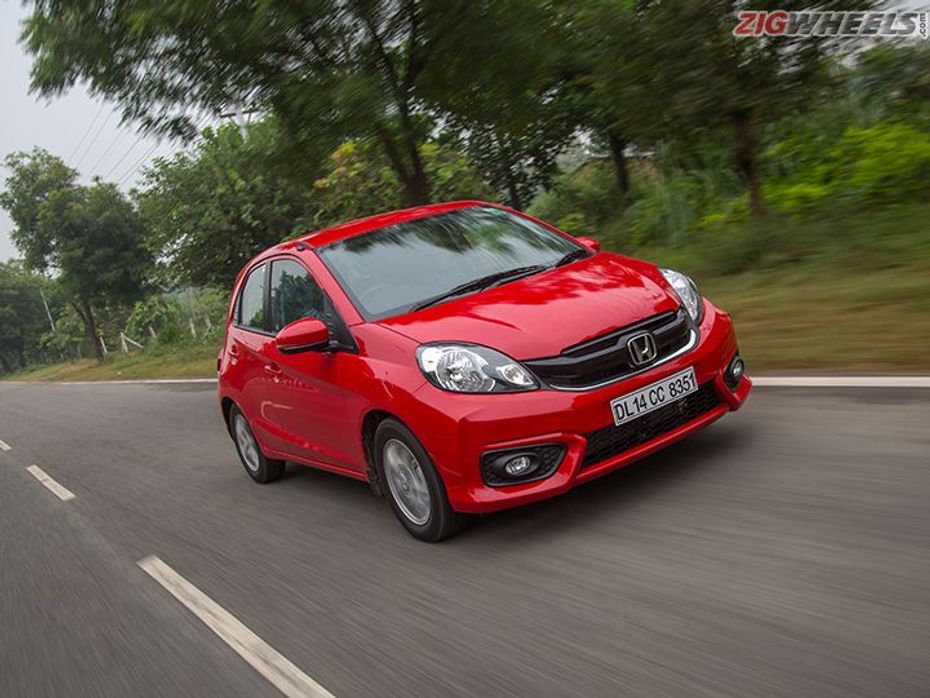
A nip and tuck for the Brio was long overdue, considering that it had been around for about half a decade. The little Honda was lauded for its city-friendly proportions and peppy motor, but sales did slump a fair bit purely because the opposition kicked things up a notch. For the first time in five years, the hatch has been given a facelift to take on the newer lot. But are the changes good enough?
Changes to the exterior are minimal. The Brio retains its cutesy face, but there's an all-new bumper and grille combo. As you might have figured out already, it's the same setup we've seen on the updated Amaze, just with the chrome grille being swapped for a gloss black one here. It looks more mature now, but on a personal front, I still prefer the older face. The side and rear get absolutely no updates whatsoever, save for a stubby spoiler with LED lights and updated detailing in the tail lamps. The all-glass hatch is unique to the Brio, but it is surprising to see Honda skimp out on a rear wiper. The flat-ish tail is likeable, but the design is beginning to show its age. On a related note, we'd have loved to see the hot RS version that other Asian markets get, with the super-cool projector headlamps and dual-tone alloy wheels, but sadly that isn't an option just as yet.
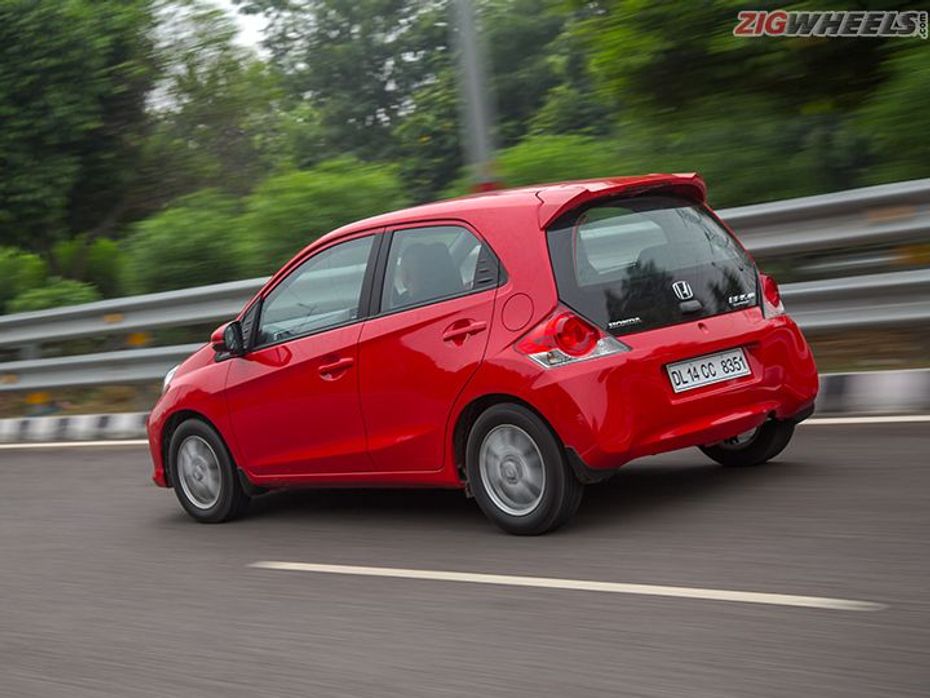
The age-old and slightly drab-looking dashboard has made way for a much better looking setup. It's in line with what we've seen on the Amaze and, more recently, the BR-V. Quality is evidently better than, say a Swift, but probably just a notch below the Grand i10. The all-black theme with dull silver and carbon-fibre textured accents add a hint of sportiness to the overall package. The layout is functional, and ergonomics are spot on. Everything from the new digital air-conditioning controls to the knobs and switches for the audio system are well within reach. Oddly enough, those are the only two noteworthy upgrades to the interior. Other features include a new instrument cluster, power windows all round, seat-height adjust and tilt adjust for the steering. What I'm not too kicked about are the dummy switches on the dash, right next to the steering wheel. They feel out of place, especially on a top-spec variant.
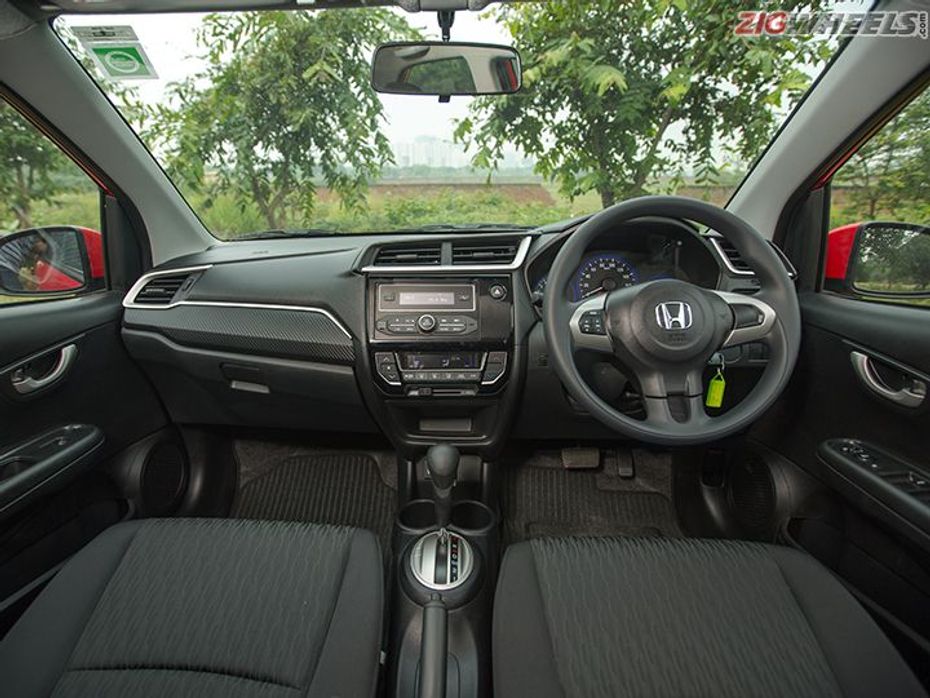
The front seats continue to be comfortable and supportive, and there's a healthy amount of range both in terms of height and reach. The rear too - just like before - has just about enough legroom for a six-footer like me to sit behind my own driving position. Since dimensions remain unaltered, the Brio remains a strict four-seater in our books. There simply isn't enough width for a third occupant to sit comfortably in the rear bench.
The driving position is very go-kart-like, which eggs you on to wear your enthusiast hat. There are no changes to the powertrain, which means the Brio continues to be powered by the same 1.2-litre, four-cylinder motor. Power and torque figures remain unaltered at 88PS and 109Nm, and seem adequate.
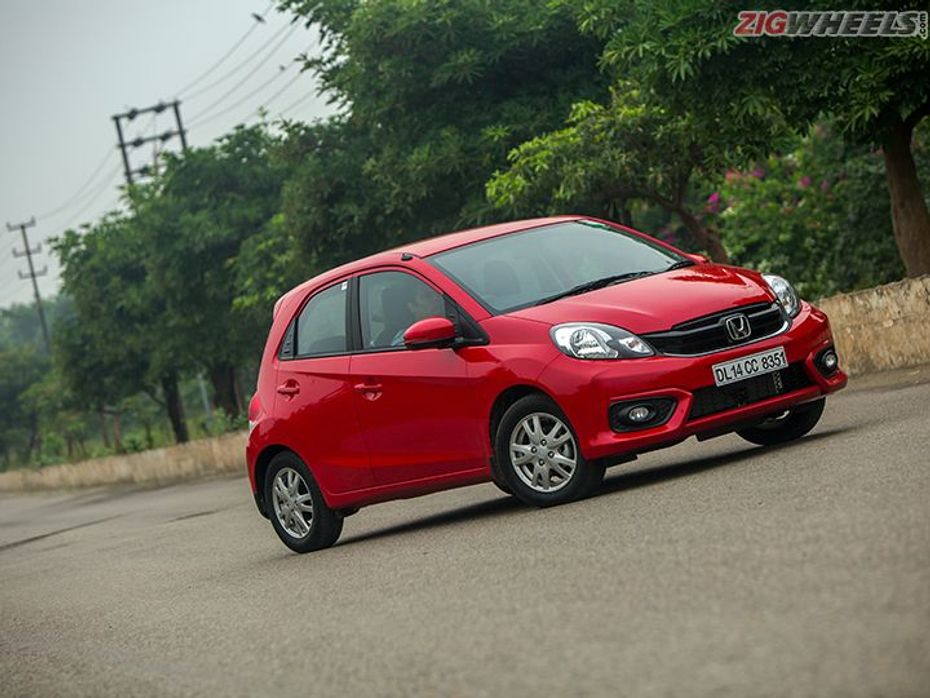
Much like before, the little i-VTEC pot begs to be revved hard. It’s the only way you can have a bit of fun with it. It sounds pleasing at high revs too, if I may add. The clutch - in true Honda fashion - is super light and has a small travel. It bites in nice and early, so setting off in start-stop traffic isn't going to be a big hassle. But the torque kicks in slightly late, so you will find yourself downshifting often.
If you cannot be bothered with shifting gears yourself, there's an automatic variant on offer as well. Unlike the rumours that suggested a possible CVT option the Brio continues to sport the good-old 5-speed torque converter automatic. There's no perceptible difference in the way the hatch moves, so shifts are still smooth, and kickdown induces a lot of protest from the motor. Drive with a super light foot however, and the engine-gearbox combo feels at ease. Upshifts happen early in the rev range (~2000rpm) and the transmission tries to eke out every little bit of mileage it can from the motor. Claimed fuel-efficiency stands at 16.5kmpl versus 18.5kmpl for the manual. A set of paddle shifters would've sealed the deal, but then - that's being a tad too greedy, isn't it?
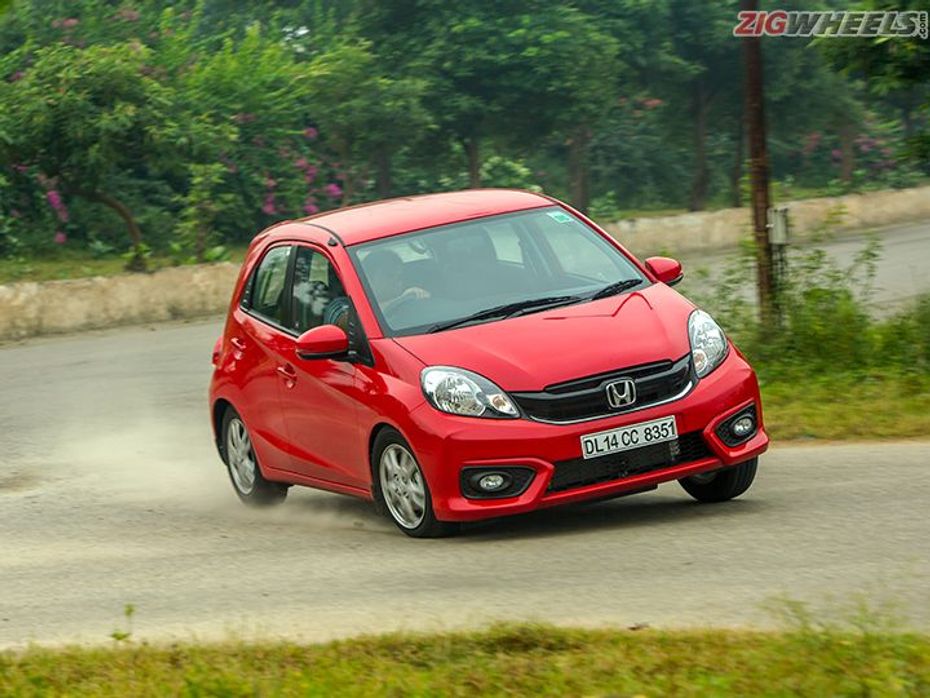
The tiny proportions make for a delectable recipe when you encounter a set of winding roads. The steering feels precise and tells you exactly what the wheels are up to. Don't get too carried away though, the skinny tyres aren't the grippiest around. Fatter rubber would've made the Brio handle even better.
The steering isn't too heavy, which makes it a hoot and half inside the city. Quick turns, lane changes and u-turns are dealt with a single finger. On the flipside, it feels twitchy when you are belting it on the motorway. Ride however remains relatively flat, which is rather surprising for a car with such a tiny footprint. The suspension is well tuned for city use and there's little to worry about whilst going over broken roads.
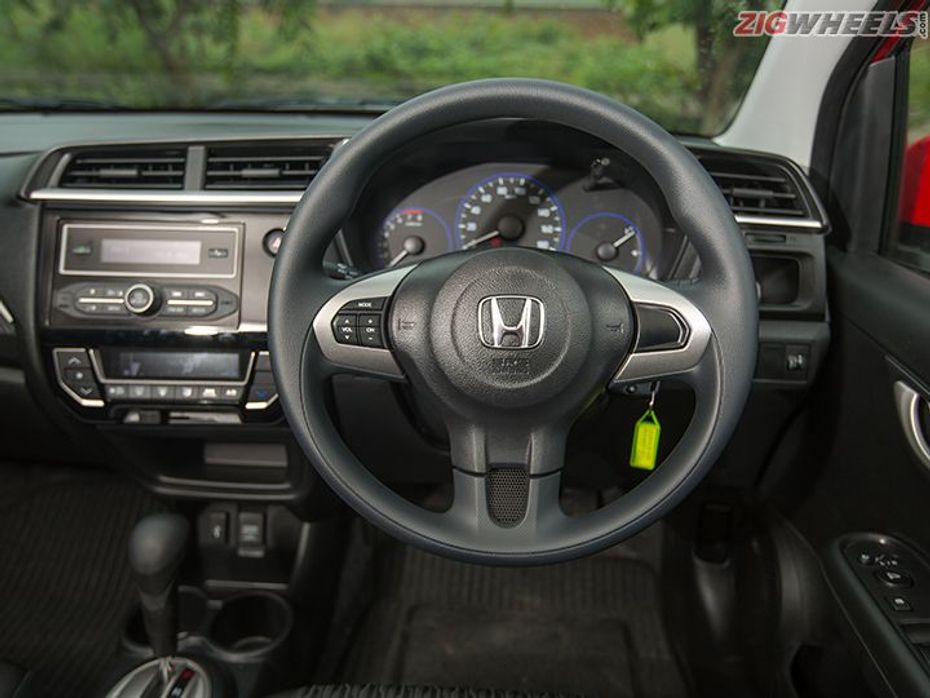
We also think this is a missed opportunity, and Honda could've (and should've) plonked in the 1.5-litre i-DTEC motor from the Amaze into the Brio. A 100PS diesel hatch would've been mouth-watering! That said, it would've pushed the price right into Amaze/Jazz territory which is a bit of a no-no for Honda right now.
There's no denying the fact that the Brio is a lovely little runabout for the city. The light steering, soft suspension, light clutch and the optional automatic are testimony. Has it gotten better with the update? Not really. There's a significant amount of features missing, and the lack of a diesel motor will get it struck off the list of a few prospective buyers right away.
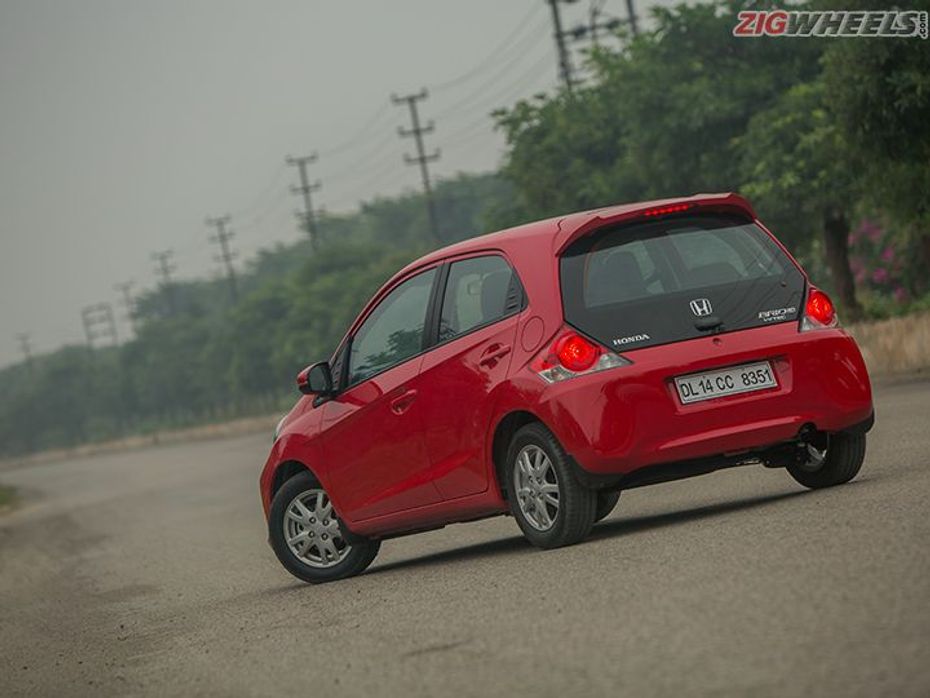
The facelift purely serves as a reminder of what a potent package the Brio is. What you get for the price, is a nippy little hatch for the city with a reliable motor and the backing of a reliable brand. A longer feature list would have been more welcome considering the amount of time Honda has taken in giving the Brio a facelift, and the starting price of Rs 4.69 lakh. At the price, the Brio just manages to undercut arch rivals like the Maruti Suzuki Swift and Hyundai Grand i10, which offer more space. That does not take away the fact that the Brio is still a likeable, fun to drive, tiny little city car powered by a peppy and reliable Honda engine.
 Maruti Ignis
Maruti Ignis
 Renault KWID
Renault KWID
India's largest automotive community
 Honda Amaze
Rs. 7.99 Lakh
Honda Amaze
Rs. 7.99 Lakh
 Honda City
Rs. 11.82 Lakh
Honda City
Rs. 11.82 Lakh
 Honda Elevate
Rs. 11.69 Lakh
Honda Elevate
Rs. 11.69 Lakh
 Honda City Hybrid
Rs. 19.00 Lakh
Honda City Hybrid
Rs. 19.00 Lakh
 Honda Amaze 2nd Gen
Rs. 7.19 Lakh
Honda Amaze 2nd Gen
Rs. 7.19 Lakh
 Maruti Swift
Rs. 6.49 Lakh
Maruti Swift
Rs. 6.49 Lakh
 Maruti Baleno
Rs. 6.66 Lakh
Maruti Baleno
Rs. 6.66 Lakh
 Maruti Wagon R
Rs. 5.54 Lakh
Maruti Wagon R
Rs. 5.54 Lakh
 Tata Tiago
Rs. 4.99 Lakh
Tata Tiago
Rs. 4.99 Lakh
 Maruti Alto K10
Rs. 3.99 Lakh
Maruti Alto K10
Rs. 3.99 Lakh